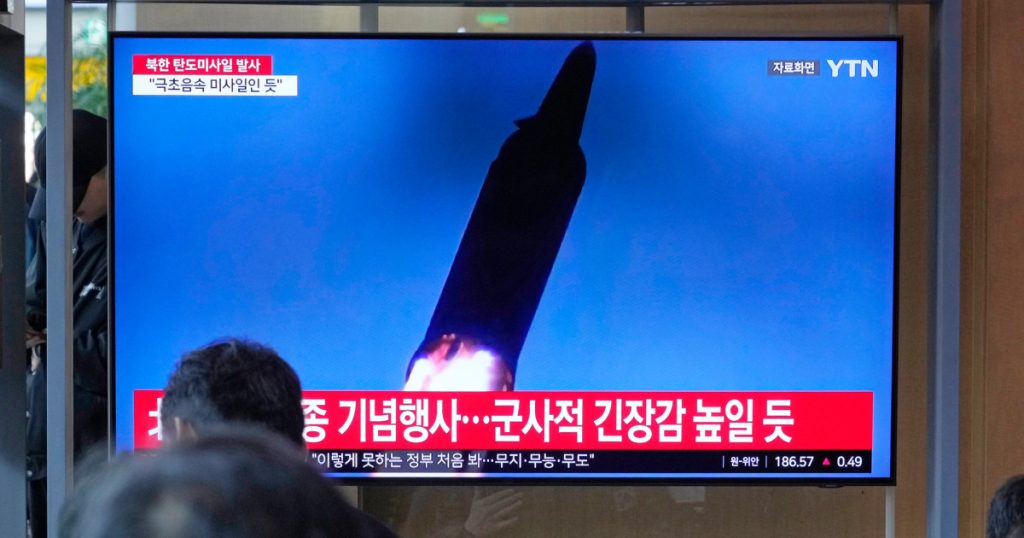North Korea test-fired a suspected intermediate-range ballistic missile towards waters off its eastern coast, reaching a distance of about 372 miles before landing between the Korean Peninsula and Japan. South Korea assessed the launch as a possible follow-up to a March test of a new intermediate-range hypersonic missile. These developments are concerning as the new weapons being developed could potentially reach U.S. targets in the Pacific, such as the military hub of Guam.
The Japanese Defense Ministry provided further details on the missile, indicating that it flew about 403 miles at a maximum altitude of 62 miles before landing outside Japan’s exclusive economic zone. Japanese Prime Minister Fumio Kishida expressed concerns over North Korea’s frequent missile launches, stating that they pose a threat to regional peace and safety. This launch was the first known event since March 18, when Kim Jong Un oversaw a live-fire drill targeting South Korea’s capital.
Tensions in the region have escalated since 2022, with North Korea using Russia’s invasion of Ukraine as a distraction to ramp up testing of missiles and other weapons. Both the United States and South Korea have responded by increasing joint training and drills, as well as enhancing deterrence strategies involving strategic U.S. assets. There are concerns that North Korea may escalate pressure, especially during an election year in the United States and South Korea.
North Korea has been focused on developing weapons with solid propellants, making them easier to move, hide, and launch quickly compared to liquid-propellant missiles. Kim Jong Un has expressed a desire to acquire hypersonic missiles that can bypass adversaries’ missile defense systems. The country has also tested cruise missiles and multiple rocket launchers. In addition to missile testing, North Korea has plans to launch several reconnaissance satellites, which Kim considers crucial for monitoring U.S. and South Korean military movements.
Kim Jong Un has emphasized the strategic value of weapons like the solid-fuel intermediate-range ballistic missile engine, comparing it to intercontinental ballistic missiles targeting the U.S. mainland. North Korea’s development of new weapons and testing activities continue to raise concerns in the region and internationally. The latest missile launch came shortly after North Korea reaffirmed its plans for satellite launches this year, with the aim of enhancing surveillance capabilities and the threat posed by its nuclear-capable missiles. Monitoring of North Korea’s activities in this regard remains ongoing to assess potential threats.


